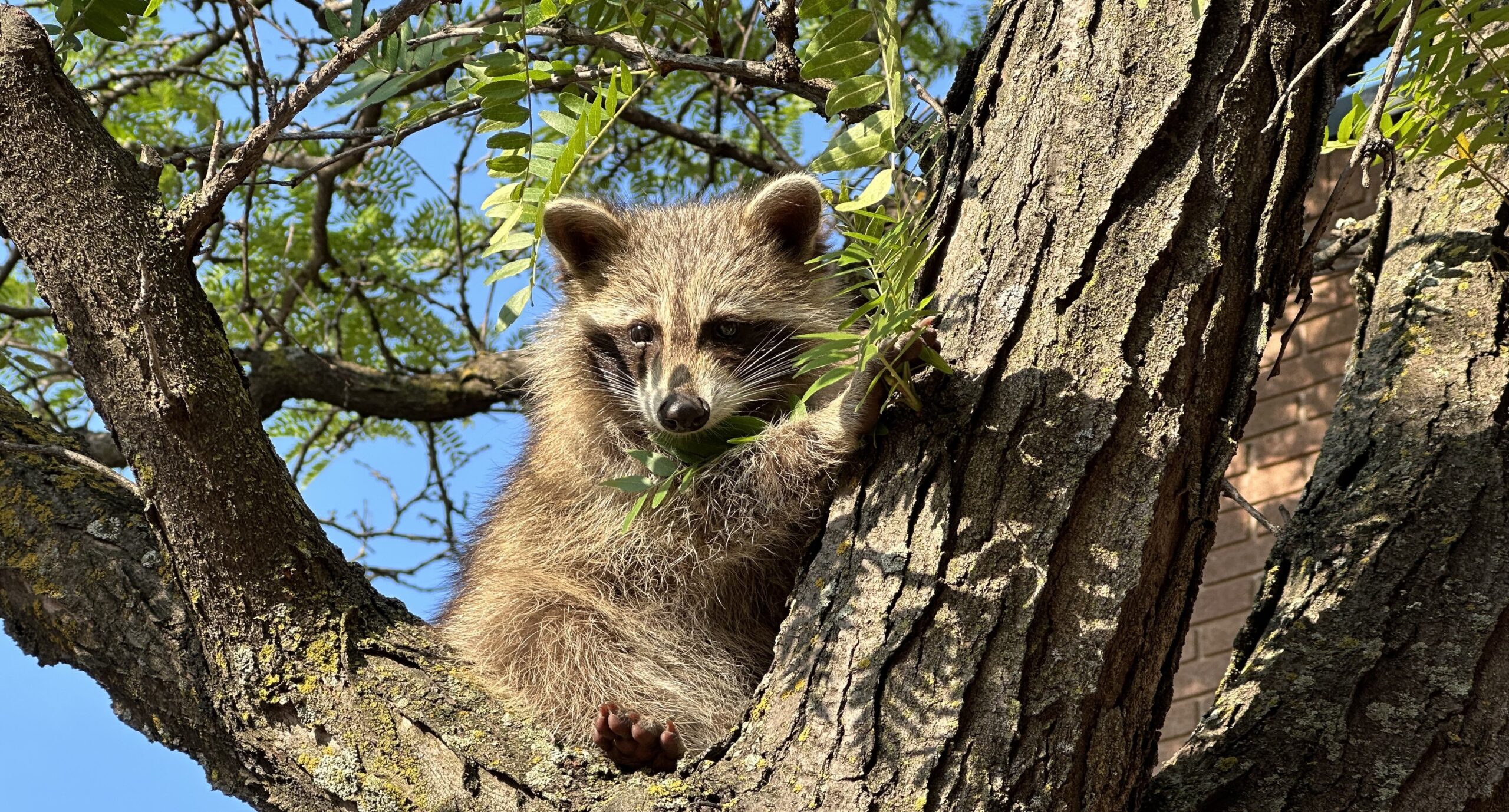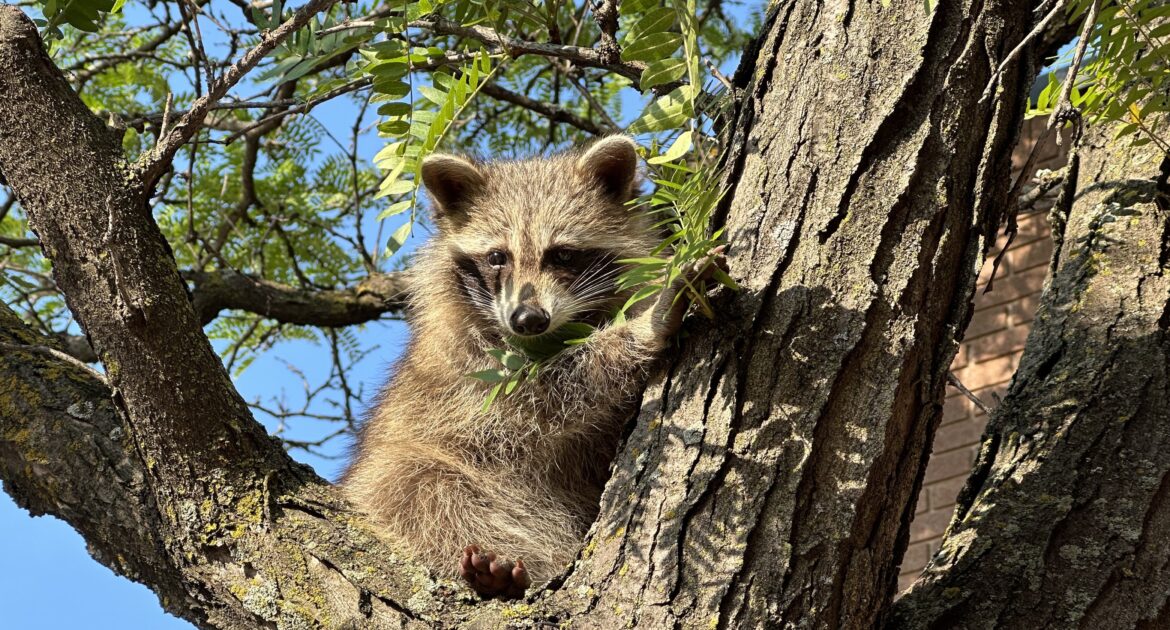Pittsburgh homeowners with historic properties often face a unique challenge: raccoons in older homes. These clever creatures are particularly drawn to aging structures, where decades of natural wear and tear create perfect entry points and hiding spots. At Skedaddle Humane Wildlife Control, we’ve seen first-hand how raccoons exploit the charm and character of older homes, turning attics, crawl spaces, and wall cavities into their personal urban accommodations.
The relationship between raccoons and historic properties presents a special concern for homeowners in neighborhoods from Squirrel Hill to Shadyside, where many homes date back generations. Understanding this connection is the first step toward effectively wildlife-proofing older properties while preserving their unique architectural elements and structural integrity.
Why Raccoons Target Pittsburgh’s Older Homes
Raccoons are opportunistic by nature, and older homes offer a treasure trove of opportunities for these intelligent mammals.
- Deteriorated building materials create easy access points, with rotted fascia boards, damaged roof shingles, and aging soffits providing minimal resistance to a raccoon’s strong paws.
- Complex roof designs common in historic architecture offer multiple potential entry points and secluded spaces where raccoons can establish dens.
- Established tree canopy around older properties provides natural pathways for raccoons to access rooflines without ever touching the ground.
- Aged chimneys and vents often have damaged or missing caps, creating perfect raccoon doorways into your home.
In historic districts like the Mexican War Streets or Allegheny West, homes dating back to the 19th century have naturally deteriorated over time, giving raccoons more options for entry. Older homes with less efficient insulation often leak more heat through the roof during winter months, creating a thermal beacon that attracts raccoons seeking warm shelter.
Telltale Signs of Raccoons in Your Historic Home
Recognizing a raccoon problem early can save thousands in damage repairs. Understanding the signs of their presence can mitigate damages quickly.
Unusual Sounds
The acoustic properties of older homes often amplify wildlife sounds, making them excellent early warning systems. Be alert for:
- Heavy thumping or walking sounds across the ceiling, typically heard during dusk or dawn.
- Scratching and scurrying noises within walls or ceilings.
- Vocalizations including chittering, growling, or baby whining sounds, especially audible in spring and early summer when raccoon kits are present.
- Dragging sounds as raccoons move nesting materials through your attic or walls.
Visual Evidence
Raccoons leave distinctive signs around your property that indicate their presence:
- Dark, greasy marks along exterior walls where raccoons repeatedly climb.
- Damaged roof edges, soffits, or fascia boards showing claw or teeth marks.
- Disturbed insulation visible from attic access points.
- Trampled garden areas or ornamental plants around the foundation.
Many homeowners mistakenly attribute raccoon damage to normal aging of their historic property. Torn shingles might be blamed on wind damage, while shifted attic insulation could be written off as settlement issues. This misattribution is why raccoon problems in older homes can go unaddressed until significant damage occurs.
The Hidden Dangers of Raccoon Occupancy
When raccoons take up residence in older homes, they create multiple layers of risk that extend beyond mere nuisance.
Structural Concerns Specific to Historic Properties
Raccoons can compromise the integrity of older structures in ways that modern construction might better withstand:
- Damaged historic plaster from raccoon urine seepage through ceilings.
- Compromised wooden support beams from scratching and chewing.
- Deteriorated original brick mortar from raccoons creating or expanding entry points.
- Worsened roof leaks that accelerate decay of period-specific architectural elements.
Health and Safety Risks
Beyond property damage, raccoons introduce serious health concerns:
Raccoon droppings commonly contain Baylisascaris eggs that can survive in attic insulation for years and pose serious health risks if accidentally ingested. Raccoons frequently damage original knob-and-tube wiring found in older homes, creating dangerous fire risks. In homes built before 1980, raccoons can disturb insulation containing asbestos or other historical contamination, releasing harmful particles into your living space.
Effective Wildlife-Proofing Strategies for Older Properties
Preventing raccoon invasions requires a specialized approach for historic homes that balances protection with preservation.
Comprehensive Property Assessment
At Skedaddle, we begin by conducting a thorough evaluation of your older property, understanding that historic homes have unique vulnerabilities:
- Roof-to-foundation inspection identifying all existing and potential entry points.
- Thermal imaging scans to detect heat signatures from raccoons and identify areas of compromised insulation.
- Chimney and vent inspection focusing on historically significant features that require specialized protection.
- Exterior perimeter evaluation checking for raccoon access routes via trees, utilities, or adjacent structures.
Strategic Exclusion Methods
Effective wildlife-proofing older properties requires techniques tailored specifically to historic architecture:
- Custom metal flashing installed to protect ornate soffit details while preventing raccoon entry.
- Period-appropriate vent covers that maintain aesthetic integrity while providing raccoon resistance.
- Reinforced chimney caps designed to protect decorative masonry elements.
- Strategic tree trimming to create natural barriers around your home without damaging the historic landscape.
The key to preventing raccoon invasions in older homes lies in understanding the unique challenges of historic properties. We’ve found that most issues occur where original building materials meet newer repairs—these transition points become prime targets for raccoon entry.
Humane Removal Techniques for Established Raccoon Problems
When raccoons have already claimed your attic or crawlspace as their own, professional intervention becomes essential.
Our Specialized Approach for Historic Homes
Removing raccoons from older properties requires extra care to prevent additional damage to irreplaceable architectural elements:
During spring and summer months, when mother raccoons often have babies in Pittsburgh homes, our technicians use specialized equipment to locate raccoon kits. We then carefully hand-remove the babies and place them in a heated reunion box outside your home, which:
- Ensures the family stays together.
- Motivates the mother to exit your home willingly.
- Prevents desperate reentry attempts that could further damage historic materials.
Our technicians employ thermal cameras to precisely locate raccoons inside wall cavities and attics without unnecessary cutting or intrusion into historic plaster or woodwork. Once raccoons have been safely removed, we seal entry points using materials and techniques compatible with your home’s original construction, ensuring both wildlife security and architectural preservation.
The Skedaddle Difference for Pittsburgh’s Historic Homes
Protecting older properties from raccoons requires more than standard wildlife control approaches. Our team brings specialized knowledge to the unique challenges presented by historic architecture.
Our Three-Step Process for Older Homes
- Assessment and removal: Our technicians begin with a comprehensive evaluation of your historic property, identifying all raccoon entry points and nesting areas. Using our humane approach refined over 30 years, we use one-way doors that allow wildlife to exit safely and effectively.
- Cleaning and disinfection: Raccoon-contaminated materials are carefully removed without spreading contaminants through your home. We apply specialized deodorizing solutions to eliminate attractant odors that might draw other raccoons to your historic property.
- Prevention and wildlife-proofing: We secure all entry points with heavy-gauge screening and custom exclusion materials designed to protect your home.
Preventing Raccoon Invasions with Skedaddle
If you’re faced with the persistent issue of raccoons in your historic home, don’t wait for the problem to escalate. Trust in Skedaddle’s expertise to safeguard your property’s architectural legacy while ensuring your family’s health and safety.
Contact us today for a comprehensive assessment and let Skedaddle Humane Wildlife Control help you preserve the charm and integrity of your prized home.




